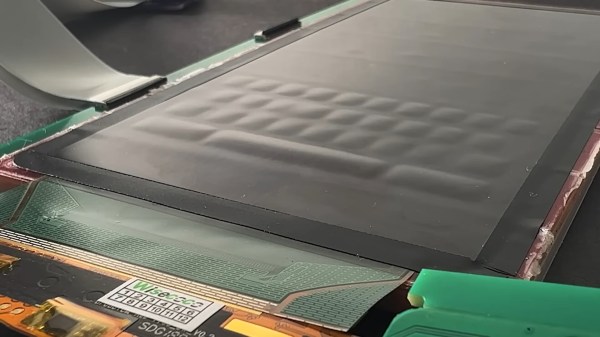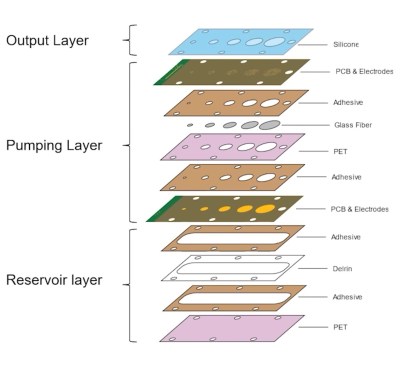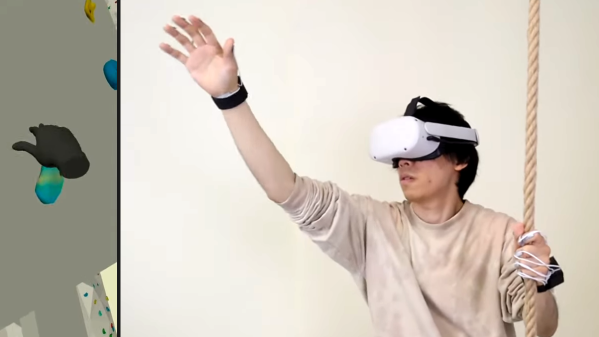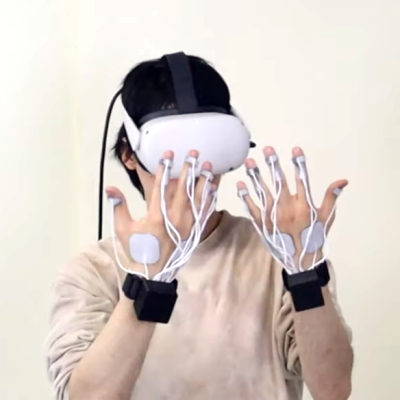A team from the University of Chicago brings us a new spin on sensory substitution, the “Seeing with the Hands” project, turning external environment input into sensations. Here specifically, the focus is on substituting vision into hand sensations, aimed at blind and vision disabled. The prototype is quite inspiration-worthy!
On the input side, we have a wrist-mounted camera, sprinkled with a healthy amount of image processing, of course. As for the output, no vibromotors or actuators are in use – instead, tactile receptors are stimulated by passing small amounts of current through your skin, triggering your touch receptors electrically. An 5×6 array of such “tactile” pixels is placed on the back of the hand and fingers. The examples provided show it to be a decent substitution.
This technique depends on the type of image processing being used, as well as the “resolution” of the pixels, but it’s a fun concept nevertheless, and the study preprint has some great stories to tell. This one’s far from the first sensory substitution devices we’ve covered, though, as quite a few of them were mechanical in nature – the less moving parts, the better, we reckon!















